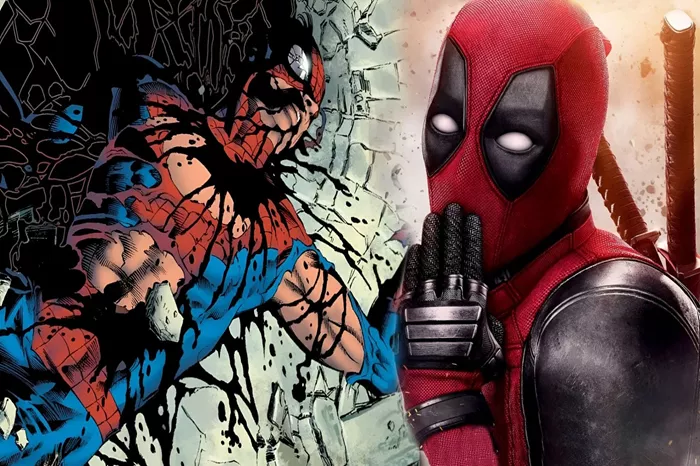Spider-Man, Marvel Comics’ beloved web-slinger and iconic superhero, has faced countless foes and challenges throughout his storied career. From battling supervillains to grappling with personal demons, Peter Parker’s alter ego has become a symbol of heroism, resilience, and sacrifice. However, in the complex world of comics and alternate storylines, the question arises: Who kills Spider-Man? This article delves into pivotal moments and story arcs where Spider-Man meets his demise, exploring the impact on the Marvel Universe and the enduring legacy of the character.
The Death of Spider-Man: Ultimate Universe
In the “Ultimate Spider-Man” comic series published by Marvel Comics, Peter Parker meets his demise in a dramatic and emotionally charged storyline. In issue #160, titled “The Death of Spider-Man,” Peter confronts the villainous Green Goblin (Norman Osborn) in a final, climactic battle. Despite his heroic efforts to protect his loved ones and the city of New York, Peter succumbs to his injuries, marking a poignant and definitive end to his journey as Spider-Man in the Ultimate Universe.
The death of Peter Parker in the Ultimate Universe resonated deeply with readers, highlighting the character’s enduring impact and the weight of his responsibilities as both a superhero and an ordinary young man. The storyline emphasized themes of sacrifice, legacy, and the consequences of wielding great power—a hallmark of Spider-Man’s narrative throughout Marvel Comics.
Clone Saga and Beyond: Alternate Realities and Resurrections
In Marvel Comics’ main continuity, known as the Earth-616 universe, Spider-Man has faced numerous threats and challenges that have tested his limits and mortality. One notable storyline is the infamous “Clone Saga,” where Peter Parker’s life is upended by the revelation of clones and conspiracies, leading to complex twists and turns in Spider-Man’s mythos.
While Peter Parker has faced moments of apparent death and peril in various story arcs, including encounters with formidable foes like the Green Goblin, Venom, and Doctor Octopus, the character has often found ways to overcome adversity and emerge stronger than before. Resurrections and revelations have played pivotal roles in Spider-Man’s narrative, showcasing his resilience and the enduring nature of his heroism.
Superior Spider-Man: Doc Ock Takes Over
In a bold and unexpected twist, Marvel Comics introduced a storyline where Doctor Octopus, Spider-Man’s longtime adversary, inhabits Peter Parker’s body and assumes the mantle of Spider-Man. This storyline, titled “Superior Spider-Man,” explored themes of identity, redemption, and the blurred lines between hero and villain.
Under the guise of Spider-Man, Doctor Octopus (as Peter Parker) attempts to carry on Spider-Man’s legacy while implementing his own methods and ideologies. The storyline challenges readers to reconsider what defines a hero and raises questions about the consequences of wielding power responsibly.
See also: BEST 5 SPIDER MAN MOVIES RANKED
Ultimate Fallout and Legacy: The Aftermath of Death
Following the death of Peter Parker in the Ultimate Universe, Marvel Comics explored the aftermath and legacy of Spider-Man’s demise in “Ultimate Fallout” and subsequent storylines. Characters like Miles Morales, a teenager with powers similar to Peter Parker’s, step into the spotlight and assume the mantle of Spider-Man, honoring Peter’s memory while forging their own paths as heroes.
Miles Morales’ introduction as Spider-Man represents a significant evolution in the character’s legacy, showcasing diversity and representation within Marvel Comics. The character resonates with new generations of readers and fans, offering a fresh perspective on Spider-Man’s enduring appeal and cultural relevance.
Beyond the Comics: Spider-Man in Other Media
Spider-Man’s impact extends beyond the pages of comic books, transcending into film, television, and popular culture. In cinematic adaptations and animated series, Spider-Man’s heroic journey and moral dilemmas continue to captivate audiences worldwide. Actors like Tobey Maguire, Andrew Garfield, and Tom Holland have portrayed Spider-Man on the big screen, each bringing their interpretation to the beloved character.
In popular culture, Spider-Man’s enduring legacy is celebrated through merchandise, fan conventions, and multimedia platforms that honor the character’s impact on superhero storytelling. Whether swinging through the streets of New York or battling cosmic threats alongside the Avengers, Spider-Man remains a cultural icon whose adventures inspire courage, hope, and the belief that anyone can be a hero.
Conclusion
In conclusion, the question of who kills Spider-Man underscores the character’s resilience and enduring legacy within Marvel Comics and popular culture. From dramatic deaths in alternate universes to heroic sacrifices and unexpected twists, Spider-Man’s journey is defined by moments of triumph, tragedy, and transformation.
As Spider-Man continues to evolve and inspire new generations of readers and fans, his legacy as a symbol of heroism, responsibility, and sacrifice remains timeless. Whether facing mortal peril or grappling with personal demons, Peter Parker’s alter ego embodies the universal themes of courage, perseverance, and the unwavering belief in doing what is right—even in the face of insurmountable odds.
As Marvel Comics continues to explore Spider-Man’s narrative through new story arcs, characters, and creative interpretations, the character’s impact on superhero storytelling and cultural mythology endures. Spider-Man’s legacy is a testament to the enduring power of storytelling and the universal appeal of a hero who, despite his flaws and vulnerabilities, continues to inspire hope and resilience in readers and fans worldwide.
Related topics:
TOM HOLLAND’S SPIDER-MAN 4 POISED TO SHINE IN THE MULTIVERSE SAGA
WHO WOULD WIN, OPTIMUS PRIME OR SPIDER MAN?
MARVEL’S SPIDER-MAN 2 UPDATE INTRODUCES NEW SUITS AND ENHANCEMENTS

